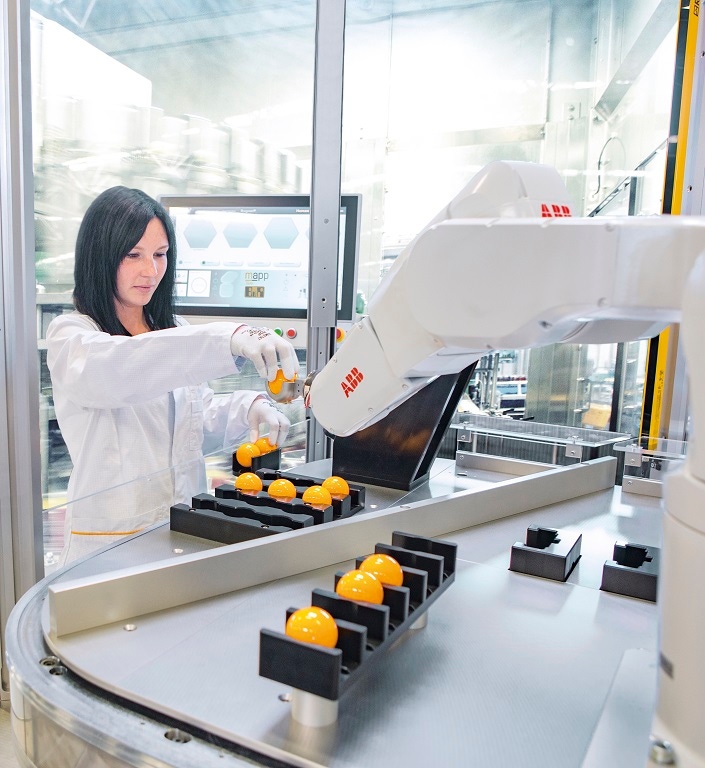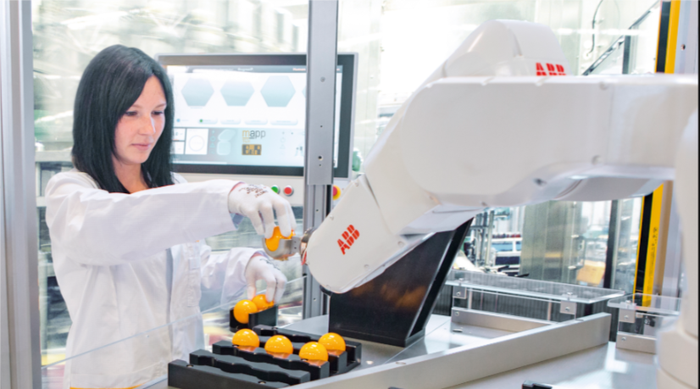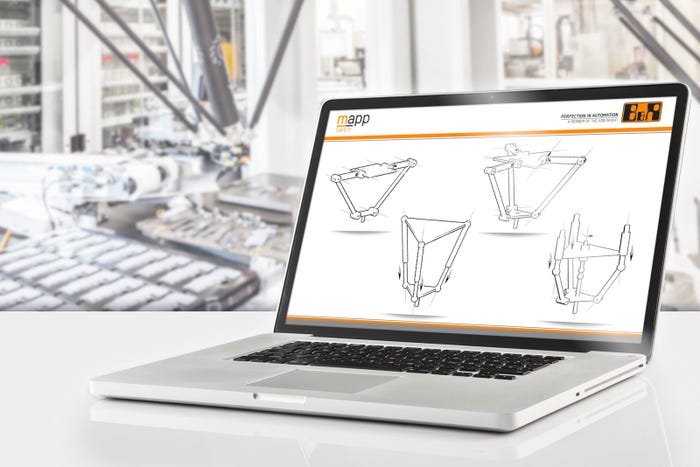Intelligent Transport Systems Enhance Human-Robot Collaboration
Safe motion control and intelligent track technology are working together to enhance human-robot interaction and eliminate the need for safety cages in manufacturing.
July 5, 2019

|
Adaptive machines are combining safe motion control, robotics and intelligent track technology into collaborative, workplace solutions. (Image source: B&R Industrial Automation) |
The goal of human and robotics interaction in manufacturing, creating an environment where humans can safety work alongside robots, has been a long term technology megatrend that is continuing to gain traction. One recent innovation adding to this concept is adaptive machines using human-track collaboration that combines safe motion control and intelligent track technology.
|
SafeROBOTICS for tripods provide safety monitoring for all types of delta kinematic systems. (Image source: B&R Industrial Automation |
Key Technology Developments
“Software, such as new safeROBOTICS functionality for delta robots, is making it easier for machine builders to embed collaborative robot arms in their designs,” John Kowal, Director of Business Development for B&R Industrial Automation, told Design News recently. “We are also seeing collaborative adaptive machines interacting with collaborative robots to allow humans to interact with automated systems.”
Kowal added that safe motion software functions allow robots and tracks to operate in safe mode when a human is in the same work area, and full performance when humans are not present. Fast processors and networks make is possible for robots and tracks to respond rapidly to safety inputs, reducing the distance required between humans and machines, which also reduces footprint. Integrating safety devices such as light curtains into the system is providing better access than traditional guarding and interlocks.
Intelligent Transport Systems
|
Five core functions help ensure safety in human-track collaboration: Safe Torque Off (STO), Safely Limited Speed (SLS), Safely Limited Force (SLF), Safe Direction (SDI) and Safe Maximum Speed (SMS). (Image source: B&R Industrial Automation) |
New intelligent tracking systems such as ACOPOStrak are creating options to ensure safety at manual workstations using limit values that have been defined for human-robot collaboration in technical specifications and type C standards from related fields.
ACOPOStrak features five core functions that ensure safety in human-track collaboration: Safe Torque Off (STO), Safely Limited Speed (SLS), Safely Limited Force (SLF), Safe Direction (SDI) and Safe Maximum Speed (SMS). In addition, the maximum safety response time of six milliseconds makes it possible for the shuttles to slow down to a safe speed and exert a safely limited force when in the vicinity of humans. When no one is around, the shuttles travel at full speed and full power.
“Intelligent track technology enables the adaptive machine, meaning machinery that adapts to the products being produced instead of products conforming to a conventional sequential production process,” Kowal stated. “One benefit is the ability, finally, to cost effectively achieve mass customization, all the way to batch size one. In general, adaptive machine technology is allowing greater automated flexibility for otherwise labor intensive applications ranging from made-to-order meal kit assembly to personalized cosmetic products to faster changeovers for short production runs and virtually any low volume, high variability product.”
The safety functions of ACOPOStrak also enable implementation of a safe setup mode. In setup mode, the speed and force limits apply to the entire track. Once people have left the danger zone, restrictions are lifted.
Impact on Applications
Kowal added that more commercialized applications are coming to market, such as a Ronchi bottle handling system that can handle virtually any container shape and dimension with no pucks or other change parts:
Medical device production can also take advantage of an adaptive machine's inherent, individualized control over shuttles to achieve serialization, as seen in this IMA system:
To learn more about using intelligent track technology to implement collaborative adaptive machines that allow human interaction, you might be interested in this video:
Al Presher is a veteran contributing writer for Design News, covering automation and control, motion control, power transmission, robotics, and fluid power.
RELATED ARTICLES:
Drive World with ESC Launches in Silicon Valley This summer (August 27-29), Drive World Conference & Expo launches in Silicon Valley with North America's largest embedded systems event, Embedded Systems Conference (ESC). The inaugural three-day showcase brings together the brightest minds across the automotive electronics and embedded systems industries who are looking to shape the technology of tomorrow. |
About the Author(s)
You May Also Like




.jpg?width=300&auto=webp&quality=80&disable=upscale)


